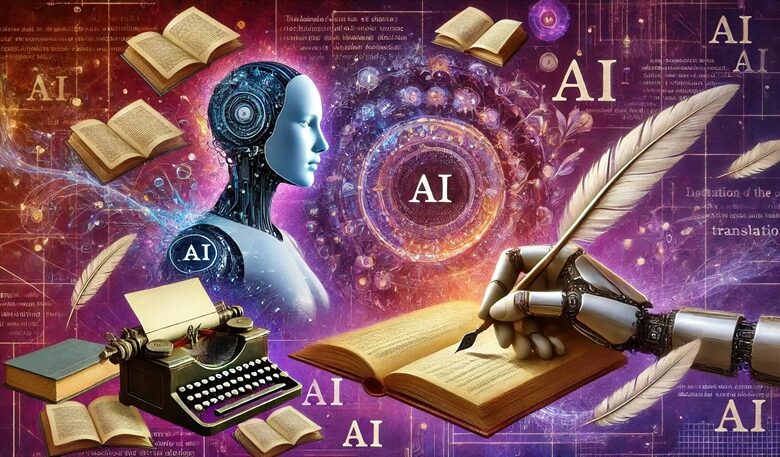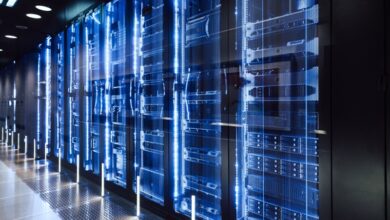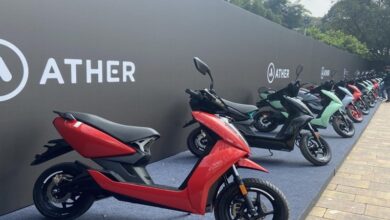Artificial intelligenceBusiness/Technology
Digital Transformation in Higher Education: Role of AI in literary translation
Saikat Kumar Basu & Asim Halder / 4th April 2025

Digital transformation in higher education refers to the integration of digital technologies into all aspects of teaching, learning, and administration to enhance efficiency, accessibility, and student outcomes. This shift is driven by advancements in technology, changing student expectations, and the need for more flexible, data-driven educational models. Key Aspects of Digital Transformation in Higher Education includes:
Online Learning & Hybrid Models:
Expansion of Learning Management Systems (LMS) like Moodle, Canvas, and Blackboard, Growth of Massive Open Online Courses (MOOCs) and micro-credentials, Use of virtual and augmented reality (VR/AR) for immersive learning, Artificial Intelligence & Automation, AI-driven chatbots for student support and administrative tasks, Personalized learning experiences through adaptive learning platforms, AI-powered grading and feedback systems.
Data Analytics & Decision-Making: Learning analytics to track student performance and predict outcomes, Data-driven curriculum development and resource allocation, Early warning systems to identify students at risk of dropping out and Digital Infrastructure & Cloud Computing.
Cloud-based collaboration tools (Google Workspace, Microsoft 365): Enhanced cybersecurity measures to protect student data, Scalable storage solutions for digital learning materials and Student-Centered Experience, Mobile-friendly platforms for seamless learning access, E-portfolios and digital credentials for skill validation and
Virtual advising and career counseling services.
Research & Innovation: Use of big data and AI in research projects, Open-access digital libraries and repositories, Blockchain for secure academic credentials and transcripts, Faculty Training & Digital Pedagogy, Professional development in digital teaching methods, Use of gamification and interactive content to engage students and Adoption of competency-based education (CBE).
Challenges in Digital Transformation:
Digital Divide: Ensuring equitable access to technology for all students.
Faculty Resistance: Overcoming reluctance to adopt new teaching methods.
Cybersecurity Risks: Protecting sensitive student and institutional data.
Sustainability & Cost: Managing financial constraints and long-term investments.
Future Trends: Expansion of AI-driven personalized learning, Increased adoption of blockchain for academic records.
Growth of virtual universities and fully online degree programs and Integration of IoT (Internet of Things) in smart campuses.
Online Learning Models: Different formats like MOOCs, hybrid learning, and competency-based education.
AI in Education – How AI is used for personalized learning, automation, and student support.
Digital Pedagogy – Best practices for faculty adapting to digital teaching.
EdTech Innovations – The latest tools and technologies shaping higher education.
Student Experience & Engagement – How digital transformation impacts student success and retention.
Ethical aspects of AI
The ethical aspects of AI in higher education are shaping the future of education in several significant ways:
Academic Integrity & Plagiarism: AI tools like ChatGPT raise concAI-powerederns about plagiarism and academic dishonesty. Institutions are developing stricter policies and detection tools to maintain academic integrity while also exploring AI’s potential for personalized learning.
Equity & Accessibility: AI can enhance accessibility by providing real-time translations, speech-to-text services, and personalized learning experiences. However, the digital divide may widen if some students lack access to AI-driven resources, reinforcing existing educational inequalities.
Bias & Fairness: AI systems may reinforce6 biases present in their training data, leading to unfair grading or recommendations. Ethical AI development in education requires constant monitoring to ensure fairness and prevent discrimination.
Student Data Privacy: AI collects vast amounts of student data for personalization. Without proper safeguards, this raises concerns about data security, consent, and potential misuse of sensitive information.
Teacher Roles & Human Oversight: AI can assist in grading, tutoring, and administrative tasks, freeing educators to focus on higher-order teaching. However, ethical concerns arise regarding AI replacing human instructors, reducing personal interaction and critical thinking in education.
Misinformation & Critical Thinking: Students relying too much on AI for learning may struggle with independent critical thinking and problem-solving skills. Ethical AI use should emphasize AI as a learning aid, not a replacement for deep engagement with course material.
AI is set to transform higher education by making learning more personalized, efficient, and accessible. However, ethical considerations must guide its implementation to ensure fairness, privacy, and the continued role of human educators in shaping critical thinkers.
AI technogy in literary translation
AI technology has significantly impacted literary translation in higher education, bringing both positive and negative consequences.
Positive Impacts
Speed and Efficiency – AI-powered translation tools like Google Translate, DeepL, and ChatGPT can quickly translate large volumes of text, making it easier for students and scholars to access foreign literary works.
Cost Reduction – AI reduces the need for expensive human translators, making literature more accessible to students and researchers.
Learning and Teaching Aid – AI assists in comparative literature studies by providing quick translations for analysis and interpretation.
Multilingual Accessibility – It helps non-native speakers engage with texts they might not otherwise read, expanding literary appreciation and cross-cultural understanding.
Negative Impacts
Loss of Nuance and Cultural Context – AI struggles with idioms, metaphors, and cultural subtleties, leading to translations that may lose the original text’s depth.
Quality Concerns – Machine translations often lack literary flair and poetic elements, making them unsuitable for high-level literary studies.
Reduced Emphasis on Human Expertise – Overreliance on AI may discourage students from developing deep translation skills or critical thinking about linguistic structures.
Ethical and Copyright Issues – Some AI models are trained on copyrighted material without permission, raising concerns about intellectual property rights.
While AI can be a valuable tool, human expertise remains essential for high-quality literary translation, especially in higher education, where deep interpretation and cultural understanding are crucial. Some notable cases where AI has been used in literary translation, showcasing both its benefits and limitations:
DeepL’s Use in Literature: DeepL, a widely praised AI translation tool, has been used by students and scholars to translate literary texts for academic research. While it provides grammatically sound translations, it often struggles with poetic language, humor, and wordplay. Some universities use it as a supplementary tool rather than a primary translator.
AI-Assisted Translation of Chinese Poetry:
Researchers have experimented with AI to translate classical Chinese poetry into English. While AI models like GPT-4 and Google Translate can produce coherent translations, they often miss cultural allusions, tonal beauty, and poetic rhythm. Human translators still need to refine AI-generated drafts.
“The Seeker” (AI-Translated Novel): In 2019, a Chinese science fiction novel titled The Seeker was partially translated using AI. The AI provided a rough draft, which human translators then refined. The process was significantly faster but required substantial human intervention to ensure literary quality.
Spanish and French Literature in Academia: In higher education, AI is increasingly used to assist in translating Spanish and French literary works for non-native speakers. While students benefit from quick access to translations, professors often highlight that AI-generated texts lack deeper literary and cultural insights, making them unsuitable for serious literary analysis.
Automated Subtitling for Foreign Films and Plays: AI is also used to translate subtitles for literature-based films and theatrical performances. However, automatic translations often fail to capture dramatic tone, humor, and double meanings, leading to unintended misinterpretations.
The future of literary translation under AI
The future of literary translation under AI is likely to be a mix of exciting possibilities and complex challenges. Here’s what we can expect:
AI as a Collaborative Tool: AI will assist human translators rather than replace them. Advanced models will handle initial drafts, speeding up the process and allowing translators to focus on refining style, cultural nuances, and artistic expression.
Improved Machine Translation Quality: AI models like GPT and DeepL are improving rapidly, learning to better capture idioms, metaphors, and emotional depth. However, fully replicating the subtleties of human expression remains a challenge.
More Accessible Literature: AI-driven translation could lead to an explosion of global literature reaching new audiences. Books that might never have been translated due to cost or market concerns could find new readers through AI-assisted workflows.
Ethical and Creative Concerns: There will be ongoing debates about authorship, intellectual property, and the role of human creativity in translation. Should an AI-translated novel be credited to the AI, the human editor, or both?
Customizable Translation Styles: Future AI could allow readers to choose translation styles—whether they prefer a more literal or a more poetic interpretation. This personalization could revolutionize how people engage with translated texts.
Potential for Bias and Errors: AI models still struggle with cultural context, historical connotations, and authorial intent. Without careful human oversight, translations might reinforce biases or misrepresent original meanings.
A Shift in the Translator’s Role: Translators may become more like editors, curators, and quality controllers, ensuring AI-generated translations retain the essence of the original work while refining flow and readability.
In short, AI will make literary translation faster and more accessible but won’t replace the human touch needed for deep, culturally sensitive storytelling.






